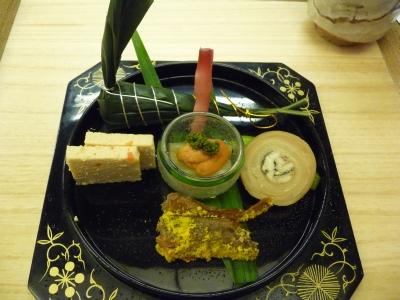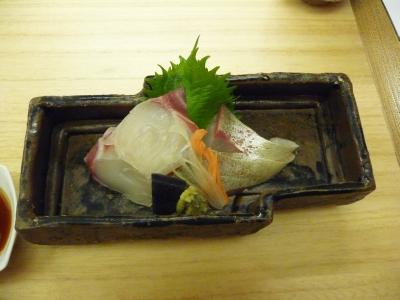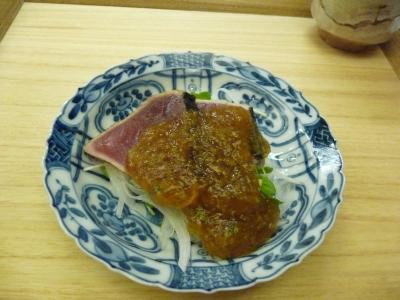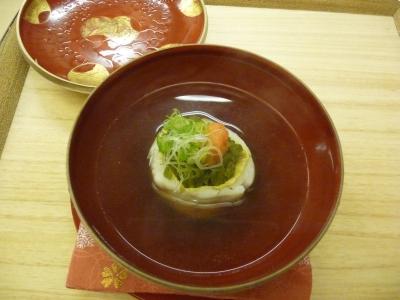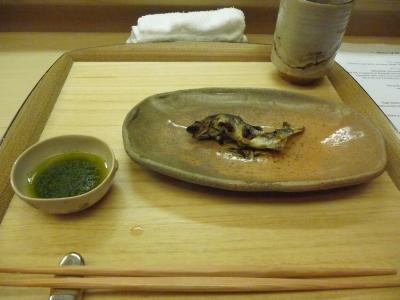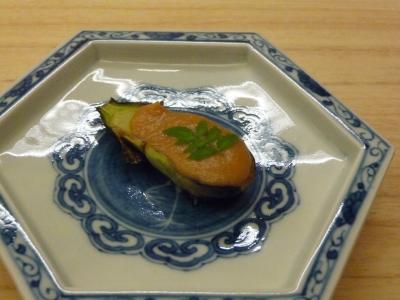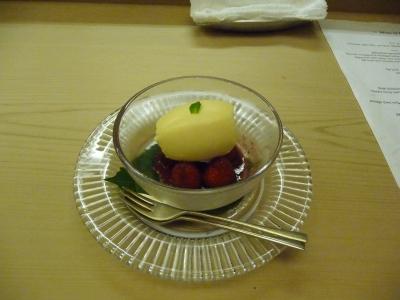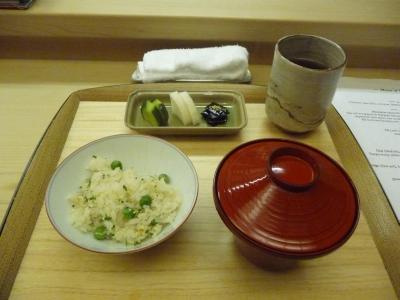-
Posts
1,890 -
Joined
-
Last visited
Content Type
Profiles
Forums
Store
Help Articles
Everything posted by mkayahara
-
Balance it out with a splash of vinegar?
-
No Irish whiskey? I have yet to see a "base spirit" typology that satisfies me. If you do it by source of fermentable sugars, you leave out vodka and gin; if you do it by distillation proof, London dry gin and genever suddenly start to look different; if you do it by post-distillation infusion, where does spiced rum fall? I guess the only way to really do it is by historical use. Personally, I would fold pisco in with brandy/cognac/other fruit eaux-de-vie, cachaça in with rum (even though it's not, really), and add mezcal in with tequila.
-
OK, I get that, though most of the potatoes I buy seem to be pre-washed these days. (And personally, I treat all dirt-covered surfaces as contaminated.) But wouldn't the same thing apply to all root vegetables? Garlic, beets, radishes, etc.? Edited to add: I guess it's just that a lot more people eat a lot more potatoes? Though onions would be another one, I'd think.
-
Potatoes? What's wrong with potatoes?
-
I don't make a huge point of measuring the vegetables; I add whatever's on hand, almost always carrots, celery, onions and black pepper, and occasionally parsley and garlic. That said, the tip that I have found makes the most difference is to wait until the last hour of simmering before adding the (small-diced) vegetables. It's enough time for the vegetables to give their flavour to the stock, without making it taste tired.
-
It's hard to give any advice on how to improve chicken stock when you don't say what it is you're not happy with! Personally, I've gotten to a point where I like the flavour and am happy with the clarity - I try and simmer between 180F and 190F - but I've never been that happy with the gel. As in, I don't get any. I'm not sure if I'm not simmering long enough, don't have enough of the right parts (I use whole spent laying hens from my egg guy at the farmers' market), or if I'm just using too much water for the amount of chicken I have. Thoughts appreciated.
-
Two thoughts come immediately to mind: first, cooking the fruit for 20-30 minutes is going to mute the flavours; you want to bring it up to temp as quickly as possible (without scorching) to keep the maximum flavour. Second, you want a "modern" approach, "updating the very old art of preserves," why would you omit the pectin? Pectin is a great tool for controlling the final texture of your jam.
-
You say that like it's a bad thing!
-
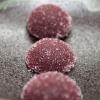
"Modernist Cuisine" by Myhrvold, Young & Bilet (Part 1)
mkayahara replied to a topic in Cookbooks & References
I've been really excited about this book for a long time. I was prepared to shell out the money when the anticipated price point was in the $300 range. But with where it is now - and keeping in mind that Amazon.ca isn't listing it, so I'm not sure I can get the "Amazon discount" - I'm wondering: if it's already divided into 5 volumes, why are they not being released separately? I'd happily buy all five at $125 each, and it would allow me to spread out the expense in a way that works with my cash flow situation. But, with all due respect, given the choice between this book at $625 and a brand-new Polyscience Sous Vide Professional at $800, I'd rather be able to *do* sous vide cooking than just read about it. -
If you have lots of trim, I cold definitely see giving sausages a try. The tenderloins would make a great inlay for a terrine, though I've secretly always wanted to make "duck fingers" (like chicken fingers, but with duck tenderloins).
-
I'm having the same problem as jenc: when I click on the link I get a 404 error.
-
Rice pudding! Generally, anything that can be made in quantity and scooped into bowls.
-
How are you incorporating the berries? I usually put the batter into the pan and wait for it to cook partially on the bottom, then scatter the berries over the still-wet top. Sometimes I'll press them in, if necessary. They'll often still burst, but they don't usually turn the pancakes purple and soggy.
-
I always laugh when I see recipes call for a specific amount of oil for sweating vegetables or searing meat. I just pour in oil until there's a thin layer on the bottom of the pan.
-
Reservoir, man. I usually go for their more savoury offerings - last time, I had an awesome confit Cornish hen leg with fiddleheads and morels - but they never disappoint.
-
There's a great thread on gelatin conversion here. Hope that helps!
-
Don't know how useful this is to you now that you're back from Japan, Chris, but my take on Alberta Springs is this: while it's one of my favourite Canadian whiskies, is not comparable to U.S. straight rye whiskey, despite its 100% rye mash bill. As you note, it's sweeter and less spicy than American rye... yet I think of it as being one of the spicier Canadian whiskies available. Worth acquiring if you need to fill the "Canadian whisky" slot on your bingo card, but not a substitute for US rye; it's still a blended whisky.
-
In another thread, I recommended the Swing-a-Way ice crusher, which got a good review in Imbibe Magazine. After a few months of use, though, I'm little ambivalent about it. It still works fine, but there's clearly some internal part that's started to rust, so I feel like I have to be more conscientious about rinsing it after use, and drying it as thoroughly as possible. Otherwise, I've been happy with its performance.
-
To clarify, I do own a copy and have cooked several recipes from it. The yakiudon recipe in it is one of my favourites (I've made it several times), and the daikon with miso pork sauce was a standout as well. The author doesn't pull any punches on ingredients, though, so if you don't have access to a good Japanese grocery, you might find it frustrating.
-
I have the book, and I really like it. It's recipe based, but it's not limited to recipes. Each chapter starts with a profile of a different izakaya, so it provides a lot of "cultural information" about what izakaya are, how they're run, the types of people involved, etc. If you're looking for an exhaustive collection of izakaya-style recipes, this isn't it. But if you want a good read and an interesting cross-section of recipes, it's worth checking out.
-
So it looks like PolyScience has added a new immersion circulator product to their lineup, the SousVide Professional. It looks very sleek and, at $800, seems reasonably priced. I assume they were showcasing it at the NRA show; has anyone had a chance to see it in action?
-
We ordered a couple of their house drinks, the Pure Love and the Miracle. The former had gin, lime juice, framboise and ginger ale, but was a long drink, so the "hard shake" issue was more or less moot. The Miracle was essentially an Aviation, though it had some other liqueur (Midori, IIRC) as well. I thought it was good, but not appreciably better than cocktails I've had at US cocktail bars. I'm normally a "fine-strain the ice shards out" kind of guy, but they didn't really bother me here. In retrospect, I probably should have ordered a classic cocktail I was already familiar with, but I balked at paying 1900 yen for my first choice, a Sidecar. Indeed, the overwhelming impression was just how far outside my budget it was, which is why I didn't delve any further into the menu there or the cocktail scene in Japan more widely. The space itself is beautiful, though; my partner remarked that it felt like having a drink inside a lacquered box. Edited to add: Watching Uyeda work was a real pleasure, though. The panache of his shaking style, especially the way he snaps the shaker at the end of the pour while pulling it away from the glass, was something to behold.
-
As I recall, Tender had about 8 or 10 seats at the bar, and the rest were tables. It was pretty empty when we were there last week; only three other guests, and they all sat at the bar and ordered shaken cocktails. We were sitting at a table (for the same reason Sam mentions), but had a good view of Uyeda as he worked. I was struck by one thing in particular: the waiter brought each drink over to us as it was made, rather than waiting for both to be made so he could serve us simultaneously.
-
Thanks, Hiroyuki. It's hard to tell, but based on those pictures, I think it was nanpaku udo that we ate. The following week, we saw some udo at a morning market in Takayama, and it looked the same as what we'd seen at the restaurant. I had no idea there were so many kinds of udo!
-
The dish where the dashi most struck me was the soup, the recipe for which is in Kikunoi's cookbook (p. 166). Upon reading the recipe, it appears the broth also has mirin and soy sauce in it. In any case, it was intensely flavourful and complex, far more so than any other Japanese soup I've ever had. When I think of this meal, the soup is always the first thing that comes to mind. I'm assuming the udo in question was white; the whole vegetable looked like it had been blanched (like endive or white asparagus), and the prepared serving was white in colour. Is green udo used differently? Here are some pictures. (Not my best photos, but I was more interested in living the experience than taking arty photos of it.) I was too shy to ask about photography for the first course, but it's worth mentioning. It was a cube of nagaimo jelly topped with slices of octopus, shiso flowers and a gel of light soy sauce and wasabi. This was followed by a tray of what the menu refers to as "appetizers," consisting of aburame marinated in rice vinegar, sea eel wrapped in kampyo, edamame, Japanese taro stem with sea urchin and hana sansho, tai roe cake, chimaki sushi and sweet and sour ginger. Next were two sashimi courses, first tai and shimaaji (this was the course with the carved udo, which you can see next to the carved carrot in the photo), and then bonito with ponzu gel. Then came the soup I mentioned above, with cha-soba wrapped in tilefish and egg. For the next two dishes, the items we were served diverged from the printed menu, so I'm not entirely sure of the specifics. First was a fish grilled over charcoal and eaten whole. Looking at the cookbook, I'm wondering if this is the ayu listed in the "summer" section (p. 74). Then, eggplant dengaku. This was another course that impressed me thoroughly. The flavour was balanced and intense, with a wonderful, long finish. A lot of work for a one-bite course to accomplish! (You can't really tell the scale from the photo, but the eggplant is only about an inch long.) Next was the rice course: rice with green peas and jako, served with cabbage soup and pickles. Last, dessert. We were given the choice between strawberries and mangoes. Naturally, it being spring, I wanted strawberries! The flavour was perfect.


